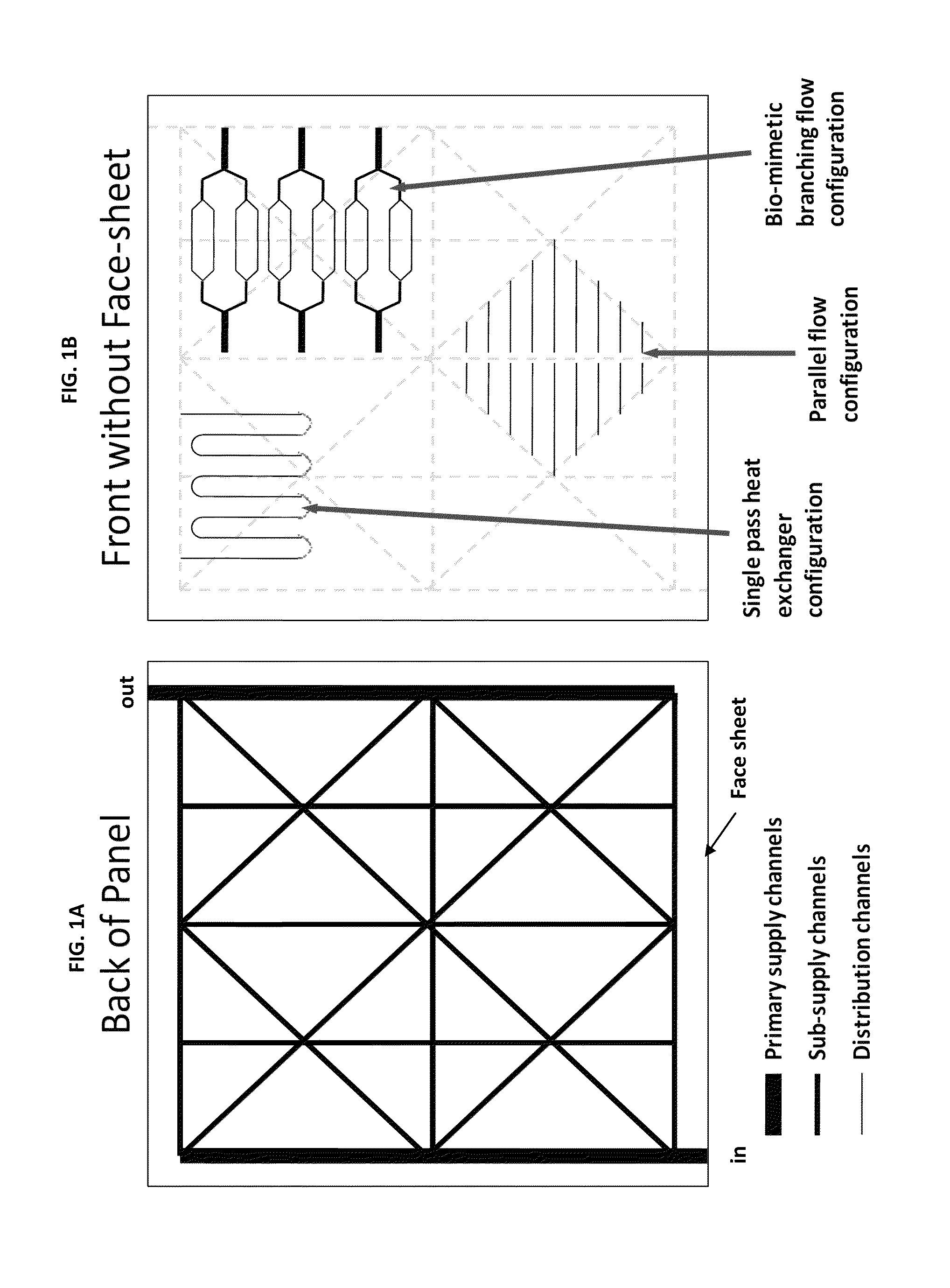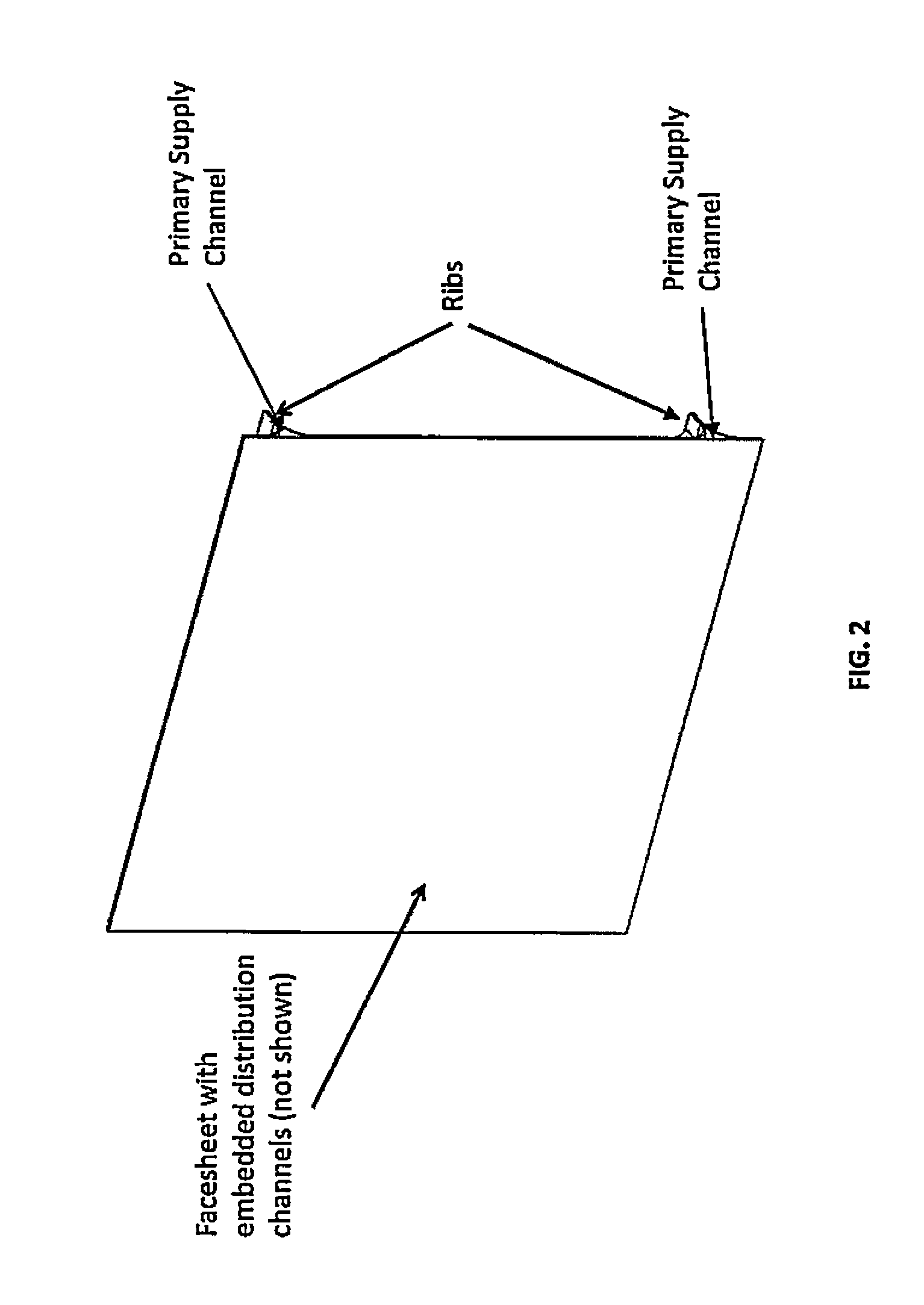Method for fabricating composite grid-stiffened structures with integrated fluid channels
a fluid channel and composite grid technology, applied in the field of thermal management systems, can solve the problems of limiting the amount of heat which can be dissipated and rejected using this approach, limiting the placement of electronic components within the spacecraft, and difficult to efficiently transfer heat over large distances, etc., to achieve the effect of improving the physical properties of the structural tissue, promoting self-healing, and large fluid flow ra
- Summary
- Abstract
- Description
- Claims
- Application Information
AI Technical Summary
Benefits of technology
Problems solved by technology
Method used
Image
Examples
Embodiment Construction
[0019]As discussed above, the disclosed invention is a method of fabricating a structural panel comprised of a series of primary supply, sub-supply, and distribution channels incorporated in the panel ribs and face sheet, and also a network of pumps and valves which control the flow of the working fluid through the panel. As a result of the requirements for low mass and complex geometry with internal channels, the preferred material of the grid-stiffened panel is carbon-fiber composite, but other embodiments could include structures composed of fiberglass or other composites.
[0020]Similar technologies have used heat pipes or cooling tubes embedded in structural panels (Rowe, N. C., “Structural Panel Having Integral Heat Pipe Network,” U.S. Pat. No. 5,506,032, issued Apr. 9, 1996 and Bodart, E. D., and Morgenthaler, G. T., “Metallic Structural Panel and Method of Fabrication,” U.S. Pat. No. 5,300,367, Apr. 5, 1994). The first of these technologies, disclosed in Rowe, addresses the in...
PUM
| Property | Measurement | Unit |
|---|---|---|
| size | aaaaa | aaaaa |
| surface area | aaaaa | aaaaa |
| thermal stresses | aaaaa | aaaaa |
Abstract
Description
Claims
Application Information
 Login to View More
Login to View More - R&D
- Intellectual Property
- Life Sciences
- Materials
- Tech Scout
- Unparalleled Data Quality
- Higher Quality Content
- 60% Fewer Hallucinations
Browse by: Latest US Patents, China's latest patents, Technical Efficacy Thesaurus, Application Domain, Technology Topic, Popular Technical Reports.
© 2025 PatSnap. All rights reserved.Legal|Privacy policy|Modern Slavery Act Transparency Statement|Sitemap|About US| Contact US: help@patsnap.com



